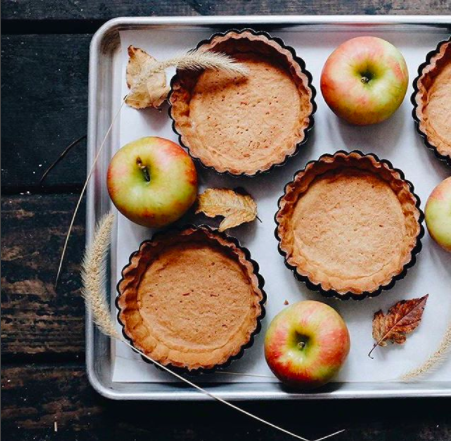https://www.instagram.com/p/BNsJP31hoDi/
The BBC reports that methane surge needs “urgent attention”
“Scientists use computer models to try to project how Earth will warm given a certain mix of gases, and right now methane’s growth rate is close to a path that would take the world into a very challenging future.”
The New Food Economy writes on a piece of legislation in support of fast food workers just introduced in New York City…
“The Fast Food Worker Empowerment Bill and a cluster of Fair Work Week Bills would eliminate on-call scheduling, ensure that workers know their shifts two weeks in advance, give existing employees first dibs on open shifts, and — in a particularly original move — make it easy for fast food workers to fund advocacy organizations directly from their paychecks.”
…while Trump tapped a fast-food CEO for labor secretary. His appointment could be disastrous for restaurant workers:
“No other government agency plays such a strong role in protecting the rights of restaurant workers; this is the department whose regular investigations reveal that food and drink establishments withhold millions in wages from their staffers every year. And now that agency will be run by Andrew Puzder, the 66-year-old CEO who runs both the Carl’s Jr. and Hardee’s chains. He has no government experience.”
PBS on how the Republicans want to overhaul food stamps:
“The GOP majority on the House Agriculture Committee released a two-year review of the program on Wednesday that stops short of making specific policy recommendations, but hints at areas where Republicans could focus: strengthening work requirements and perhaps issuing new ones, tightening some eligibility requirements or providing new incentives to encourage food stamp recipients to buy healthier foods.”
What foods will be trendy in 2017? Fortune gathers Whole Foods’ predictions:
“One of the more colorful food trends of the new year is ‘purple everything,’ the company says, such as purple asparagus, purple cauliflower, and purple sweet potatoes, among others.”
The Washington Post looks at the potential of Trump’s policy on food prices:
“Agricultural economists across the political spectrum say that there’s no way that workforce could be raptured up without reverberations throughout the food system — think farm bankruptcies, labor shortages and an eventual contraction of the broader economy. And even if you’re far from the agriculture industry, you could see $4 milk, low-quality oranges, and extortionately priced raspberries.”
CNN reports that more colleges are opening food pantries:
“The number of food pantries on college campuses is exploding. While there’s no official count, membership in the College and University Food Bank Alliance has quadrupled in the past two years. It currently has 398 members.”
The New York City Food Policy Center on urban farms in public housing:
“Trammell and her fellow 18-to-24-year-old corps members, all of whom are NYCHA residents, work diligently each day on various farming tasks, from planting seeds and weeding gardens to harvesting produce and delivering cooking demonstrations to NYCHA residents.”
Travel + Leisure has the breakdown on which airlines to fly for healthier food:
“For the eighth year in a row, Dr. Charles Platkin, director of the NYC Food Policy Center at Hunter College, examined the nutritional options available onboard airlines. And, depending on how travelers feel about their waistlines, the best bet may just be an airport salad.”
NPR reports on Trump’s depressing pick for head of the EPA:
“His official biography calls him ‘a leading advocate against the EPA’s activist agenda.’ He has repeatedly challenged the agency’s rules in court, and he has even sued the EPA for an allegedly cozy ‘sue and settle’ relationship with environmentalists. One profile noted that Pruitt would sue the federal government ‘every chance he can get.'”
TruthDig reports on scientists’ efforts to better trap carbon and increase crop yields:
“A second group of scientists believe they may even have gone one better than the vegetable world: they have explored plant chemistry and improved on it in order to get plants to trap more atmospheric carbon dioxide and turn it into tissue.”



